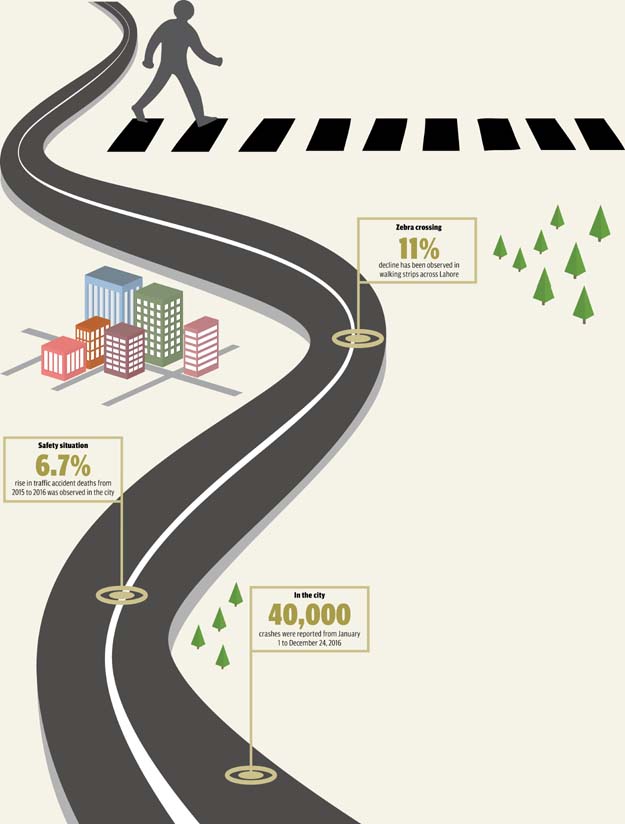Pedestrian road safety: Talking the talk, but not walking the walk
Study shows sharp decrease in walkways; finds pedestrian equally responsible for their safety

PHOTO: REUTERS
Back in 1999, 51% of the city comprised these pedestrian pathways, but that rate fell to 40% by 2010. The city was reported to have 81% zero car owning households in 2010 and this was projected to fall to 56% by 2030.
The figures were shared in a research paper titled “Pedestrian Environment and Behaviour in Lahore” by a group of five researchers from the Department of Civil Engineering, Imperial College of Business Studies and Department of Transportation Engineering, University of Engineering and Technology (UET) Lahore.
Road safety personnel aim to improve police-public relations
This study investigated the behaviour of drivers with respect to pedestrians at intersections. For this purpose, 1,040 pedestrians and 974 drivers were observed through video recordings at eight different intersections. Differences in side walking and road-crossing behaviour were investigated based on gender, age group, land-use, characteristics of the neighbourhood and the presence of a traffic signal, if any, at the intersection.
According to researchers Khurram Shahid Minhas, Zahara Batool, Bilal Zia Malik, Irum Sanaullah and Tahir Ali Akbar, for a city with such a large percentage of zero car owning households, this decline in walking strips should be taken as a cause for serious concern.
As per data shared in the paper, the road safety situation in the city was getting worse with a 6.7% rise in traffic accident deaths from 2015 to 2016. From January 1st to December 24th, 2016, traffic authorities reported more than 40,000 crashes in the city. Around 70% of the victims from these crashes were rendered unstable, 55% involved motorcyclists, bicyclists and pedestrians, 25% were related to speeding and 10% each for underage and distracted drivers.

Results showed that the overall road-crossing behaviour of pedestrians was quite unsafe. Less than one-third looked both ways for cars before crossing the road. Moreover, less than half used the zebra crossing. One out of every seventh pedestrian was busy using a cell phone while crossing. This showed that pedestrian safety was a two-way street and that the pedestrians were equally responsible for their safety as drivers.
It was observed that road crossing behaviours were improved at sites with better pedestrian infrastructure and road furniture like hospital sites and highly developed commercial areas. However, significantly different behaviour was observed in the use of zebra crossings at sites located in less developed areas and lower income neighbourhoods.
Furthermore, the road surface was rough and even signals were not available to regulate the traffic at these locations.
Road accident victims remembered
Results also showed that female drivers were more likely to show safer and friendlier behaviour towards pedestrians as compared to men. Additionally, middle-aged drivers were much likely to stop cars for pedestrians as compared to older motorists. However, they were also more likely to be aggressive and distracted as compared to older drivers.
The study concluded that pedestrian safety, while crossing the road, was directly related with the level and quality of facilities provided at a site. In Pakistan, a high proportion of pedestrian deaths were attributed to poor road etiquette, including drivers refusing to give way, inadequate walkways, lack of traffic control on many intra-city intersections, encroachment of sidewalks due to commercial activities and placement of garbage and collection containers.
It was argued that not only was pedestrians’ mobility recognition overlooked in the country, but even those crossing the roads did not make appropriate use of facilities when provided.
Published in The Express Tribune, November 28th, 2017.



















COMMENTS
Comments are moderated and generally will be posted if they are on-topic and not abusive.
For more information, please see our Comments FAQ